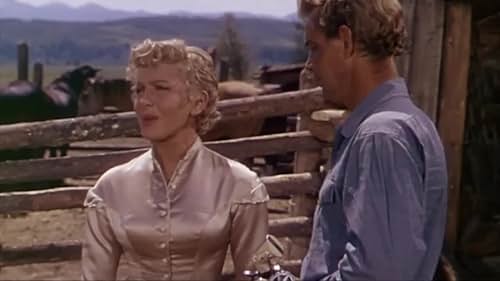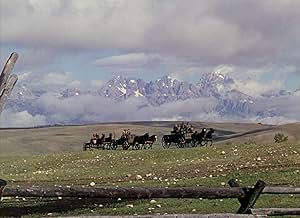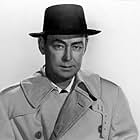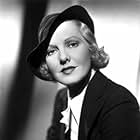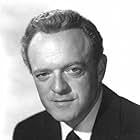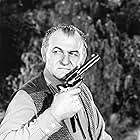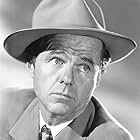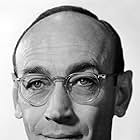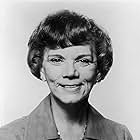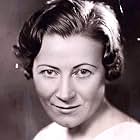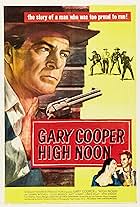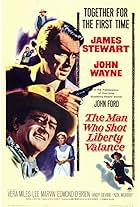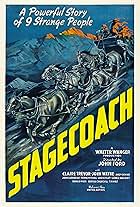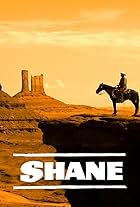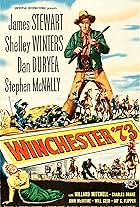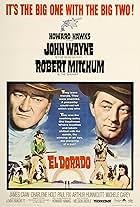An ex-gunfighter defends homesteaders in 1889 Wyoming.An ex-gunfighter defends homesteaders in 1889 Wyoming.An ex-gunfighter defends homesteaders in 1889 Wyoming.
- Won 1 Oscar
- 6 wins & 12 nominations total
- Jack Wilson
- (as Walter Jack Palance)
- Director
- Writers
- All cast & crew
- Production, box office & more at IMDbPro
Storyline
Did you know
- TriviaPrincipal photography had been completed in October, 1951, but the amount of coverage shot by George Stevens resulted in such an extremely protracted editing process that the film wasn't released until August, 1953. All this drove up the costs of what should have been a simple, straightforward Western; in fact, they spiraled so much that Paramount approached Howard Hughes about taking on the property, but he declined. He changed his mind when he saw a rough cut and offered to buy the film on the spot. This made Paramount rethink its strategy--originally it was going to release it as a "B" picture but then decided it should be one of the studio's flagship films of the year. This proved to be a good decision, as the film was a major success and easily recouped its inflated budget.
- GoofsAt the beginning, when Shane rides a horse down the hill, Teton Pass Highway is visible in the background.
- Quotes
Shane: I gotta be going on.
Joey: Why, Shane?
Shane: A man has to be what he is, Joey. Can't break the mould. I tried it and it didn't work for me.
Joey: We want you, Shane.
Shane: Joey, there's no living with... with a killing. There's no going back from one. Right or wrong, it's a brand. A brand sticks. There's no going back. Now you run on home to your mother, and tell her... tell her everything's all right. And there aren't any more guns in the valley.
Joey: Shane...
[Joey notices that Shane is wounded]
Joey: It's bloody! You're hurt!
Shane: [Shane starts to stroke Joey's hair] I'm all right, Joey. You go home to your mother and father and grow up to be strong and straight. And, Joey... take care of them, both of them.
Joey: Yes, Shane.
[Shane rides off]
- Crazy creditsIntroducing Brandon De Wilde
- Alternate versionsThe film was shot in Academy Ratio (1.33:1 or 4:3), but this was done around the time widescreen filmmaking was coming around. As such, many theatres cropped the film into a widescreen ratio to take advantage of this, with many DVDs being cropped as well. The 2013 Blu-ray Disc release is in the proper Academy Ratio.
- ConnectionsEdited into Go West, Young Man! (2003)
- SoundtracksAbide With Me
(uncredited)
Music by William H. Monk (1861)
Hymn by Henry F. Lyte (1847)
Played on piano and sung by many at a meeting
Also played and sung at a funeral
According to traditional Hollywood history, Shane is one of the 100 greatest films of all time, iconic, and even the dialog is multi-layered.
There is a scene in the short-lived TV series THE OTHERS (done by the same two men who created X-Files) where one of the lead characters, who is blind, regularly goes to the movies to watch SHANE, over and over. In many ways, that has to be one of the grandest back-handed compliments you can pay to a film.
I wish however to also suggest there is a great deal of hidden irony in what otherwise appears to be a straightforward western.
For example, Ladd hated guns and, according to film legend (Wikipedia) had to do over 100 takes in the iconic scene where he teaches the boy to draw. Similarly, Jack Palance hated horses and was only able to do one successful "mount" after many takes. Director Stevens had to use this same piece of film over and over, even to the point of running the strip backwards to make it look like Jack was dismounting.
Wait, it gets better. Director Stevens hated violence and wanted SHANE to be be an anti-violence film. However, the trope he invented for the gunfight, where the actors were violently pulled backwards by ropes as bullets struck, is considered by film historians to have "forever changed the face of film action" and led to an entirely new generation of gunfighting in films where the violence increased by a factor of 100X. Even the infamous Hong Kong action film directors consider they owe a debt to Stevens.
The final irony is that, in the opinion of this reviewer, the film does not stand for what the screenwriter intended. To this reviewer, Shane is a metaphor for the evolution of the United States itself, an arc more visible when this review is penned (in 2017) than in 1953. Although even in 1953, at the end of WW2, the US as a nation was having to face introspection, as a nation which had hitherto prided itself on isolationism suddenly felt compelled to become policeman to the entire world.
Still a great film. But also an ironic one.
- A_Different_Drummer
- Mar 18, 2017
- Permalink
Details
- Release date
- Country of origin
- Language
- Also known as
- George Stevens' Production of Shane
- Filming locations
- Production company
- See more company credits at IMDbPro
Box office
- Budget
- $3,100,000 (estimated)
- Gross worldwide
- $21,412
- Runtime1 hour 58 minutes
- Aspect ratio
- 1.33 : 1(original aspect ratio)
Contribute to this page


